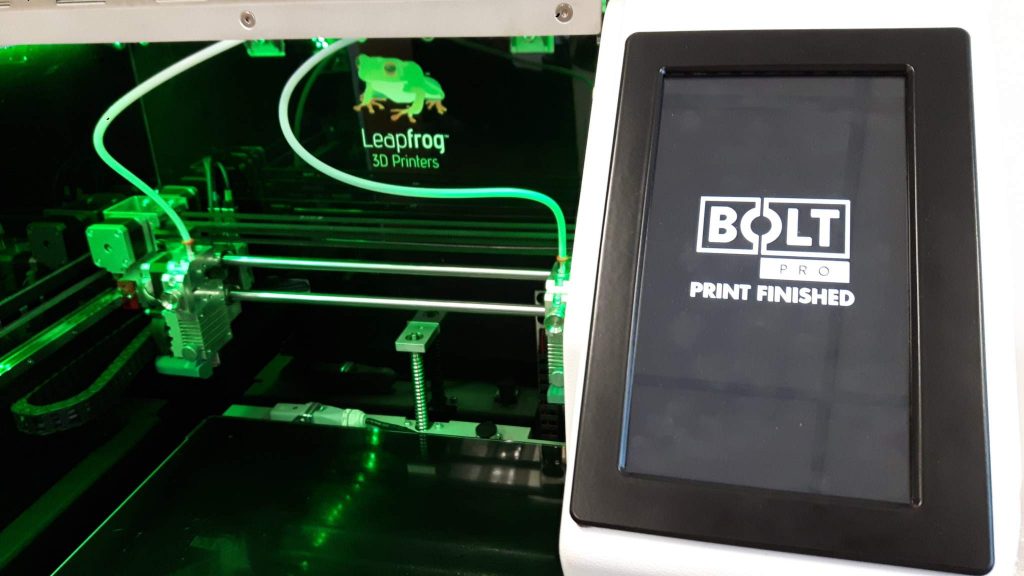Headquartered in the Netherlands, Leapfrog 3D printers are used by enterprises including Tesla, Philips, Volkswagen and NASA. The company sell a range of professional FDM 3D printers, the most recent of which is the newly launched Leapfrog Bolt Pro.
3D printing the next five years by Sander Adam CEO of Leapfrog
Five years ago, Leapfrog 3D Printers entered the market with one of the first machines you did not have to assemble yourself: the Creatr. Back then, the general consensus of the market was that in the upcoming years, desktop 3D printers would be ubiquitous, everybody would have a 3D printer in their home, and people would print their consumer products at home as easily as operating a 2D paper printer.
However, over the past 5 years, the 3D printer market did not evolve as we thought it would.
From our point of view, the 3D printing landscape has become considerably more interesting than anyone could have expected: 3D printing for home consumers did not materialize as expected, though it has become an indispensable tool for engineers and designers alike.
For instance, we have seen our customers using 3D printing to improve design workflows in a wide spectrum of applications, from advanced engineering to product prototyping in a variety of materials.
For these and more reasons, we believe that in the next five years, 3D printing will continue to prove itself as a key engineering tool, as much as CAD/CAM software did in the 90’s. Moreover, we expect that 3D printing will play a major role in small batch productions, really taking off from now until 2022.

3D Printing as an indispensable design tool
Prior to the widespread availability of CAD/CAM software, engineers used to design with pen and paper. However, for engineers educated in the last decade, this is simply hard to imagine due to their ability to quickly translate ideas into a 3D model. Certainly, this was only possible with the many 3D software solutions available. Likewise, in today’s schools, 3D printers are a standard part of the curriculum and as a result, engineers graduating similarly feel that a 3D printer is a key part of their design toolbox. Once an engineer is used to being able to touch their designs and make the translation from the computer screen to the physical world, any work environment that does not offer 3D printing capabilities would feel incomplete.
A workplace with an incapable 3D printer would be similar to an engineer without a functioning computer, since their productivity comes to a standstill. Thus, business customers will continue to increase their demands for printer availability, robustness and reliability, meaning that investing a bit more in a machine that works as required, will become as standard as avoiding the costs of downtime. Being able to offer engineers a top-notch 3D printer is like offering a fully-powered workstation: a key requirement to get the most out of your engineers.
We expect that the fastest growing 3D printing segment will happen in the professional desktop printer range: They are easy to use, strong and largely capable printers that will help engineers and other professionals excel in their field.

3D printing for small batch production
Another effect of the improvements of 3D printers on the market is the improvement of the feasibility for small productions of end products. For instance, in the last few years, 3D printing remained a process which involved manual tweaking and intervention. Now, given the technology and wide developments in the market, the productivity of small print farms continues to rise.
We believe that the coming five years will strongly bring about 3D printing for small batch production, since today, consumer goods that are 3D printed are often marketed as such. Therefore, in a few years, printing small batches of product will be mainstream and as normal as injection moulding.
Further than end products, this initiative will allow product developers to innovate faster: given the easiness of launching a new product, injection moulds will no longer require expensive machining. In addition, the little amount of labour involved in this process, we also expect production to gradually be restored to high-wage countries.
The future of 3D printing
The last five years in the 3D printing industry were a real revolution, although the result was a different development within the 3D printing industry. Nevertheless, we expect this trend will continue in the coming five years. After all, as the technology matures, machines become ever more reliable, and 3D printing will further cement its position as an indispensable tool for prototyping and production.
This is an article from the 3D Printing Industry thought leadership series looking at the future of 3D printing.
If you’d like to give your perspective on the future of additive manufacturing or trends in the 3D printing industry, then get in touch.
For further insights into the future of 3D printing, sign up to our newsletter and follow our active social media channels. Let us know your thoughts about this perspective in the comments below.
More information about Leapfrog 3D Printers is available here.
Featured image shows Sander Adam, the CEO of Leapfrog 3D printers.



